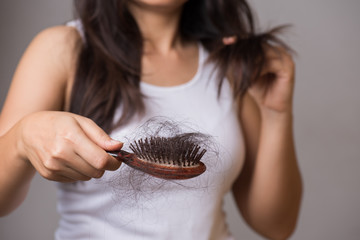Hair Extensions
Understanding Traction Alopecia: Causes, Prevention, and Treatment
Wouldn’t you agree that hairstyles play a significant role in expressing our personal style? From braids and ponytails to weaves and extensions, there are countless options to choose from. However, it’s important to be aware of the potential risks linked with certain hairstyles, especially when it comes to a condition called traction alopecia. Let’s look at the causes, prevention, and treatment of traction alopecia, helping you make informed decisions about your hair care routine.
What is Traction Alopecia?
Traction alopecia is a form of hair loss that tends to happen due to excessive tension or pulling on the hair shafts. It typically results from hairstyles that tightly pull the hair, such as braids, ponytails, buns, weaves, and extensions. The constant pulling at your edges over time can damage the hair follicles, leading to hair breakage, thinning, and even permanent hair loss.

Causes of Traction Alopecia:
Traction alopecia is primarily caused by repetitive strain on the hair. Some common factors contributing to this condition include:
- Tight Hairstyles: Wearing hairstyles that involve tight braids, ponytails, buns, or extensions for extended periods can lead to hair damage.
- Improper Hair Care: Using excessive force while brushing, combing, or styling the hair can put stress on the follicles.
- Hair Accessories: The use of tight headbands, hair clips, or hats that pull the hair tightly can contribute to traction alopecia.
Preventing Traction Alopecia:
Good new is traction alopecia can be prevented by following a few simple steps:
- Looser Hairstyles: Choose looser hairstyles that do not put excessive strain on the hairline and scalp. Not everyday is ‘Slick-back Ponytail’ day and besides, loose hairstyles can look equally as good as snatched styles.
- Gentle Hair Care: Show your hair love and attention. Be gentle when brushing, combing, or styling it, and avoid using excessive force or harsh chemicals.
- Regular Breaks: Give your hair regular breaks from tight hairstyles, allowing it to rest and recover from any strain. Believe us, your hair will thank you.
- Proper Hair Accessories: Use hair accessories that are not overly tight or restrictive, and avoid wearing them for too long.
Treatment Options:

If you suspect you have traction alopecia or notice signs of hair loss, it is important to consult a dermatologist/hair specialist. They can take a look at your condition and give appropriate treatment options, which may include:
- Changing Hairstyles: Switching to looser hairstyles and avoiding further tension on the hair.
- Topical Medications: Some topical solutions may help promote hair growth and strengthen the follicles.
- Platelet-Rich Plasma (PRP) Therapy: This treatment involves injecting concentrated platelets from your blood into the scalp to stimulate hair growth.
- Hair Transplantation: In some cases where sever hair loss is extensive, hair transplantation may be considered to restore hair in affected areas.
So what’s the moral of the story? Give your hair a break. Traction alopecia can result from years of wearing tight hairstyles. By understanding what can cause it, taking preventative measures, and seeking appropriate treatment when necessary, you can minimise the risk of hair loss and promote a healthy scalp and hair. Remember to look after the health of your hair and scalp while still keeping true to yourself, embracing your unique style and expression.✨
